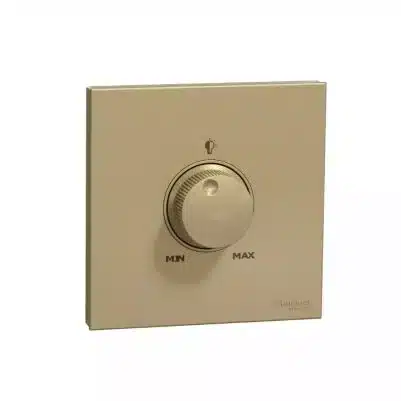June bugs, also known as June beetles or May beetles, are a common sight during the warm summer months. These beetles belong to the Scarabaeidae family and are characterized by their robust bodies and distinctive buzzing flight.
One intriguing question that often arises about these insects is whether or not they are blind. In this article, we will explore the vision capabilities of June bugs and shed light on what makes them fascinating creatures.
Table of contents
What are June Bugs?
June bugs, also known as June beetles or May beetles, are a group of beetles belonging to the family Scarabaeidae. These insects are widely distributed and can be found in various parts of the world. There are numerous species of June bugs, and their appearance and behaviors can vary.
Characteristics of June Bugs
Here are some general characteristics of June bugs:
- Physical Appearance: June bugs are typically medium to large-sized beetles with a robust, oval-shaped body. They have distinctive antennae that can be quite long and end in a series of plates that can fan out or fold together.
- Coloration: The coloration of June bugs can vary, but many species are brown or black, and some may have iridescent hues. The elytra (hard wing covers) often have a shiny or matte appearance.
- Flight: June bugs are known for their distinctive flight patterns. They are often observed flying in a somewhat clumsy and buzzing manner, especially during the evening and night. Their flight is primarily directed by their well-developed compound eyes.
- Lifecycle: The life cycle of a June bug typically includes four stages: egg, larva (grub), pupa, and adult. The larvae are commonly found in the soil, where they feed on plant roots. The adult beetles emerge from the pupal stage and are often seen during the spring and summer months.
- Nocturnal Behavior: Many June bug species are crepuscular or nocturnal, meaning they are most active during the dawn and dusk hours or at night. This behavior is believed to be an adaptation to avoid predators that are more active during the day.
Read: Is the Tooth Fairy Real? (Explained)
Understanding June Bug’s Vision & Lifecycle
These insects possess compound eyes, a common feature among many beetles. Compound eyes consist of many tiny lenses, each capturing a small portion of the surroundings.
Although the resolution of each lens is not as high as that of a human eye, it allows June bugs to detect movement and light variations effectively. June bugs primarily rely on their vision to navigate their surroundings, find mates, and locate food sources.
Their compound eyes are particularly adept at detecting changes in light, making them well-suited for their nocturnal habits. These beetles are most active during the evening and night, taking advantage of their keen ability to navigate in low-light conditions.
Lifespan of the June Bugs
The lifespan of June bugs varies depending on their life stage:
- Egg Stage: The egg stage is relatively short-lived, typically lasting a few weeks. Female June bugs lay their eggs in the soil, and once the eggs hatch, the larvae (grubs) emerge.
- Larval Stage (Grub): The larval stage of June bugs is considerably longer, lasting one to three years, depending on the species. During this time, the grubs live in the soil, feeding on plant roots and organic matter.
- Pupal Stage: The pupal stage follows the larval stage and generally lasts a few weeks. This is the stage where the grub undergoes metamorphosis and transforms into an adult beetle.
- Adult Stage: The adult stage of June bugs is relatively short-lived, typically ranging from a few weeks to a couple of months. During this time, adult June bugs focus on mating, laying eggs, and feeding.
Are June Bugs Blind?
June bugs are not blind; the misconception arises from their seemingly clumsy behavior when flying or moving around. These insects are naturally awkward, often running into objects. Contrary to their apparent lack of coordination, it’s not a result of blindness.
Moreover, their flying skills are not the most proficient compared to other insects. While most insects move their wings in an up-and-down motion, June bugs employ a figure-eight motion known as ‘snap-winging.’
This involves curling and uncurling their wings. Interestingly, they use their forewings to create space for movement. But to execute this, they first need to emerge from their shells. This unique characteristic contributes to their distinctive flight pattern and adds to the perception of clumsiness.
Do June Bugs Have Eyes?
June bugs do have eyes, despite the common misconception fueled by their clumsy behavior, often colliding with objects.
What Do June Bugs Eat?
June bugs, in their adult stage, typically feed on a variety of plant materials. Their diet can include:
- Foliage: June bugs may consume leaves from a range of plants. While they are not as destructive as their larval stage (grubs), they can still cause damage to foliage when present in large numbers.
- Flowers: Some June bugs are attracted to flowers and may feed on the petals or other floral parts. This behavior can have consequences for certain plants, especially if a significant population of June bugs congregates in an area.
- Fruit: June bugs may also feed on ripe or decaying fruit. This can make them a nuisance in orchards or gardens where fruit trees are present.
You can Read This too: How Does Safecracking Works? Full Guides & Tips
How Do June Bugs Get into the House?
They are attracted to light, and their entry into houses is often accidental. Here are some common ways June bugs may find their way into homes:
- Open Doors and Windows: Like many insects, June bugs can enter homes through open doors and windows. They may be attracted by indoor lights, and once inside, they might have difficulty finding their way back out.
- Outdoor Lights: They also are known to be attracted to artificial lights, especially during the evening and night. If you have bright outdoor lights near doors or windows, June bugs may be drawn toward them and inadvertently find their way inside.
- Gaps and Openings: Small cracks or gaps in doors, windows, or screens can provide entry points for June bugs. These insects can exploit even tiny openings to access indoor spaces.
- Ventilation Systems: In some cases, June bugs may enter homes through ventilation systems or chimneys. They might be seeking shelter or be attracted by indoor lights visible from these openings.
- Accidental Entry: Due to their sometimes clumsy flight patterns, June bugs may accidentally fly into homes while navigating their surroundings. This is more likely to happen if they are buzzing around outdoor lights close to the house.
Are June Bugs Harmful?
June bugs, in both their larval (grub) and adult stages, can have varying impacts, and their perceived harm depends on the context. Here’s a breakdown of their potential effects:
Larvae (Grubs)
- Damage to Plant Roots: The larvae of June bugs, commonly known as grubs, feed on plant roots. In lawns and gardens, a high population of grubs can cause damage to grass and other plants by disrupting the root system.
- Lawn Damage: Large numbers of grubs in lawns can lead to patches of brown, unhealthy turf as the grass becomes deprived of essential nutrients.
Adults
- Foliage and Fruit Damage: Adult June bugs may feed on plant foliage, flowers, and ripe or decaying fruit. While they are not typically considered major agricultural pests, their feeding can cause cosmetic damage to plants.
- Nuisance Factor: The buzzing flight of adult June bugs, especially around outdoor lights, can be a nuisance. They may accidentally enter homes, and their presence indoors might be undesirable.
How Do I Keep June Bugs Away?
If you’re looking to keep June bugs away from your home and garden, here are some preventive measures and strategies you can consider:
- Use Natural Repellents: Some essential oils, such as citronella, eucalyptus, and neem oil, are known for their insect-repelling properties. Create a diluted spray using these oils and water and apply it to areas where June bugs are problematic.
- Seal Entry Points: Ensure that doors and windows are equipped with properly fitting screens. Repair any tears or gaps in existing screens to prevent June bugs from entering your home.
- Limit Outdoor Lights: Reduce outdoor lighting during the evening and night, especially around doors and windows. This can help minimize the attraction of June bugs to your property.
- Remove Attractants: Remove decaying organic matter, such as dead leaves and rotting fruit, from your garden. These materials can attract June bugs and provide breeding sites for larvae.
- Lawn Care: Healthy lawns are more resilient to June bug damage. Proper lawn care practices, including aeration and appropriate watering, can promote robust grass and reduce the attractiveness of your lawn to egg-laying female June bugs.
See this: How to Get Mold Out of Clothes | Full Guide
Frequently Asked Questions
June bugs are harmless to humans. They do not bite or sting. However, their presence indoors or in large numbers can be a nuisance.
The lifespan of June bugs varies, with the egg and pupal stages lasting weeks, the larval stage lasting one to three years, and the adult stage lasting a few weeks to a couple of months.
No, June bugs are not blind. They have compound eyes that allow them to see, but their seemingly clumsy behavior can create the misconception that they might be blind.
Conclusion
Summarily, June bugs are not blind; in fact, they possess compound eyes that are well-suited for their nocturnal lifestyle. These beetles have adapted to low-light conditions, allowing them to navigate, find mates, and locate food during the evening and night hours.
Understanding the vision capabilities of June bugs adds another layer of appreciation for these fascinating insects that play a significant role in the ecosystems they inhabit.
References
- Thepestinformer.com – Are June Bugs Blind?
- Mrbuggs.com – What are June Bugs? Everything you Should Know
- Roachguide.com – Are June Bugs Blind?




